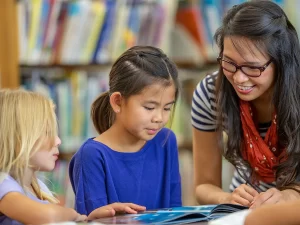
Spanish is the second most spoken native language in the world. Spoken across all five continents and being the second language for international communication, the number of Spanish learners continue to grow.
If you are reading this, that means probably you are one of those thinking about joining the huge family of Spanish speakers. The options for learning Spanish are endless, whether taking a face-to-face course in your town, studying online or try blended learning… it’s up to you to choose what suits you the best. To give you a hand, we have compiled the main differences between the three main course types, so you can choose your perfect one. Read on, time to learn Spanish!
- Face-to-face learning. The traditional place-based classroom learning. With a face-to-face Spanish course, you will concentrate harder since you won’t be able to be distracted by that sweet afternoon snack or that TV show that gets you hooked. You will have more real-life examples and the opportunity to learn from your peers and their backgrounds. Students taking face-to-face courses may show more consistency in learning than those learning at home. Students also gain a greater understanding and access more information through teacher and other classmates’ language and voice. Not to mention that it is also possible to learn through the mistakes made by others. Finally, for some students it is easier to learn in the familiar and traditional classroom environment.
- Online learning. Spanish online courses give students the flexibility and comfort of studying at their own pace, at their own place. Solely with a device connected to the Internet, students can rearrange their study hours at their convenience. Taking into account that it is increasingly common to have crazy work schedules nowadays, many students enjoy the opportunity of being able to organize their lessons when they want. One more thing: there are no travel and parking expenses commuting to the school.
- Blended learning. Also called “hybrid learning”, blended learning combines the traditional classroom approach with online training techniques. As in online courses, blended courses provide great flexibility. Some contents are presented in the classroom while others can be available online. Students get to meet periodically with their teachers and classmates taking advantage of face-to-face interaction as well.
Whatever your decision is, what is important is that you get to know who is in charge of the course and who will be providing instruction. Teaching entails great responsibility, and teachers need to be properly qualified and trained.
Take into account the learning methodology of the course, the time you have available and your budget. Do not hurry up to make a decision and listen to the real experiences of other students who have previously taken that course. Good luck and welcome to the beautiful Spanish-speaking world!



